How To Convert Figma To WordPress Effortlessly (3 Methods)
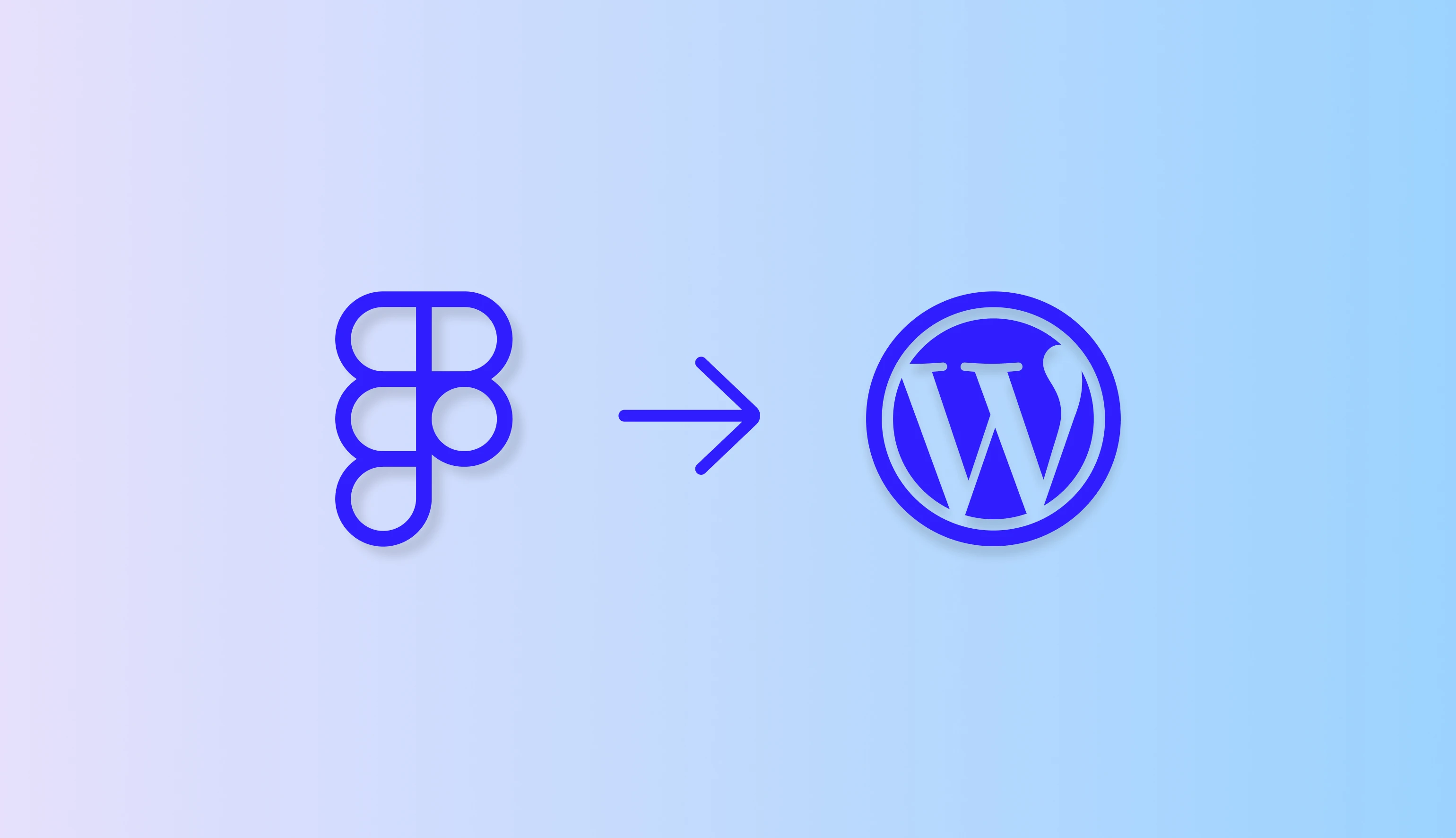
Struggling to translate your stunning Figma designs into a functional WordPress website? Bridging the Figma-WordPress. While both Figma and WordPress are user-friendly, translating stunning designs into websites can be daunting for beginners.
In this blog, we’ll explore three key methods to bridge this gap, catering to both coding master’s and visual aficionados.
Discover the top 3 methods to bridge the Figma-WordPress gap:
- Using the HTML Process : Unleash your inner developer and wield the power of HTML, CSS, and PHP. For ultimate control and pixel-perfect precision, this path is for you.
- Using a Premade Theme : The magic of Figma-to-WP converters like “Figma to WP” or “Yotako”. They’ll generate code you can paste straight into WordPress, saving you precious time and frustration.
- Using Elementor and Divi: Visualize your dreams with page builders like Elementor and Divi. Simply import your Figma files and watch your masterpiece come to life with a few clicks. No coding is required, just puredrag-and-drop bliss!
Automate Figma Data Extraction
Let’s Picture this:
Let’s say goodbye to hours wasted on manual exports!
Effortlessly transfer data between Figma and your other tools. Discover how built-in Figma features and integrations can liberate your workflow and propel your projects to new heights. Discover how built-in Figma features and integrations can liberate your workflow and propel your projects to new heights.
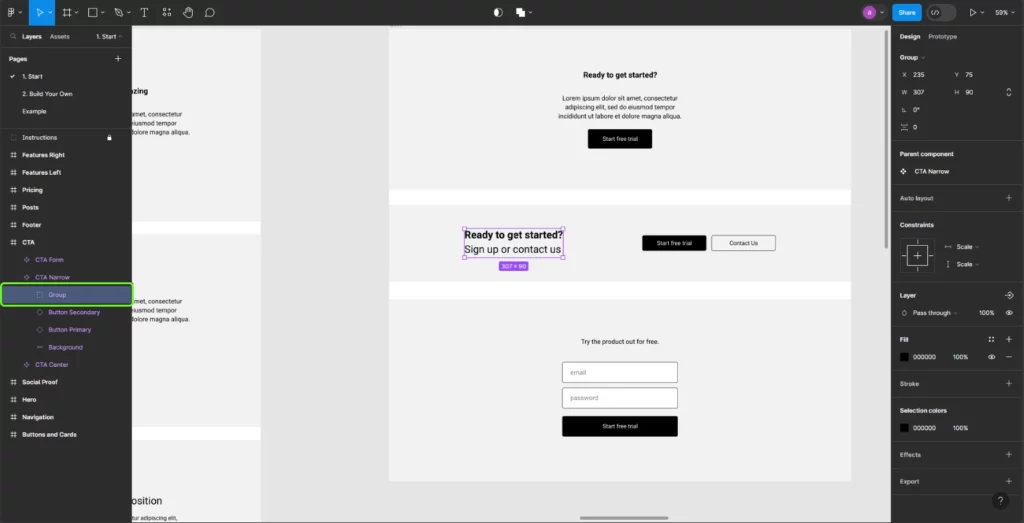
On the left side, a specific element is chosen. Towards the lower right side of the screen, you’ll find the option to Export.
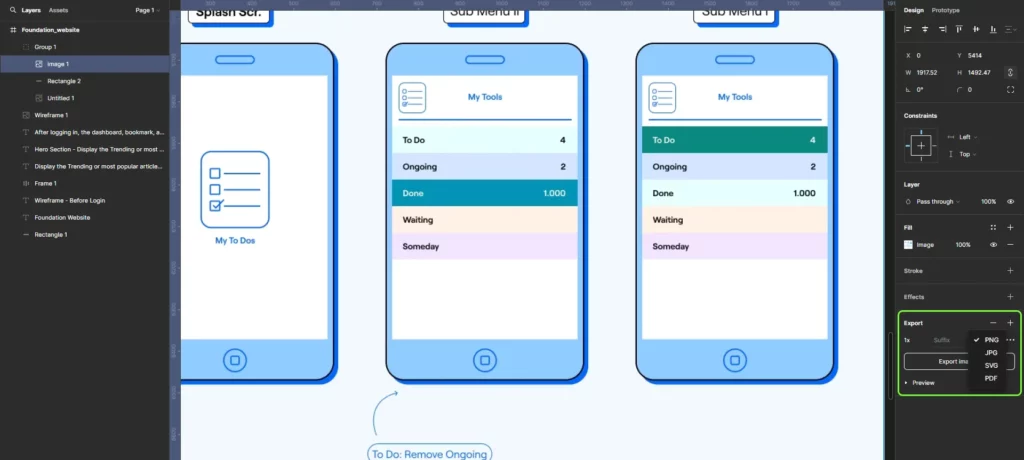
If you press the plus (+) sign in the Export section on the right side, you can select the size for exporting the item. You can also include an extra bit of text at the end and alter the image format. Previewing will give you a preview of what you’re going to export.
Export entire folders or layers in batches without the hassle. Keep control over individual layers, even for intricate elements like modal windows, ensuring precise pixel management. Witness the “Export” button morph into a badge of liberation, unleashing a torrent of perfectly formatted assets. Conquer complex elements, layer by layer, with Figma’s meticulous precision. This is your design revolution.
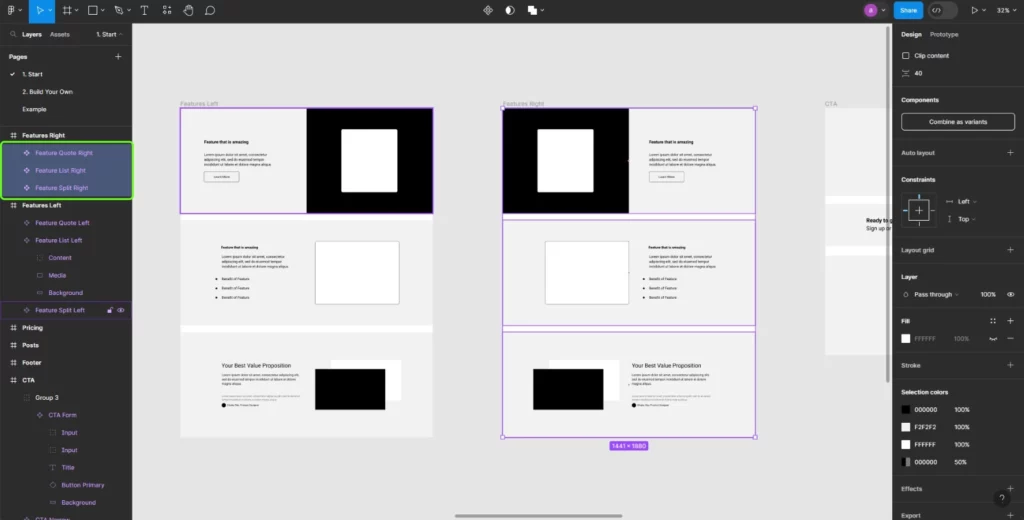
To choose multiple items from the overall frame, you need to pick them individually. Here three items are selected
Tired of exporting one thing at a time in Figma? Batch Export is here to save the day! With one click, export multiple assets quickly. No more repetitive clicks or format switching. Master batch export to save time and boost your design productivity. Say hello to efficiency and goodbye to hassle!
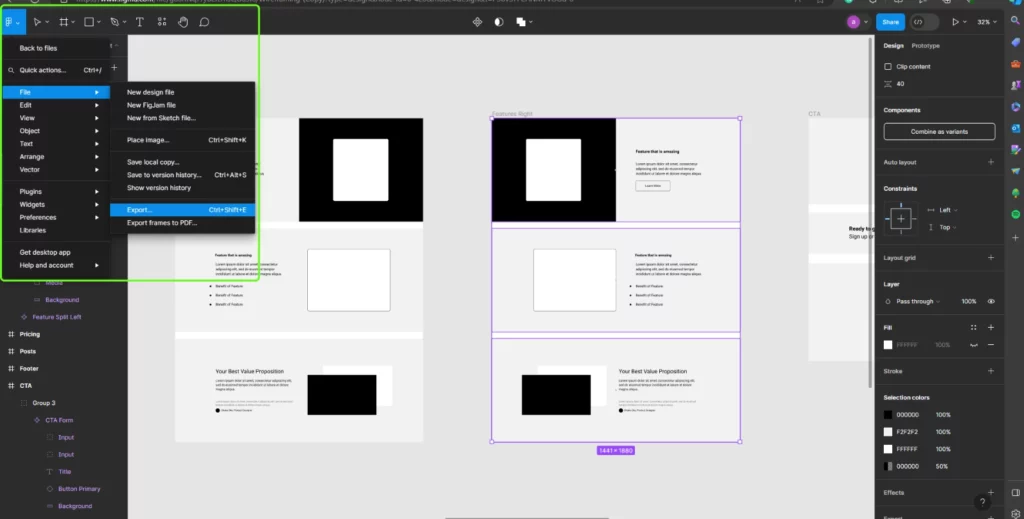
Go to the File menu, then select Export (Windows: Ctrl + Shift + E / Mac: Shift + Options Key + E) to open the Export window. This will enable you to view the layers that will be exported individually.
Boost your workflow with efficiency! Export assets effortlessly with one click from frames and boards across your project. Choose your preferred format (PNGs, JPGs, SVGs) and automate repetitive tasks to reclaim your time for design. Bid farewell to format fatigue! Learn the secrets of multi-selection, format preset, and automated workflows. Embrace Figma’s power to create amazing WordPress experiences hassle-free. Share your experiences and celebrate newfound freedom!
HTML and PHP to Convert Figma Design to WordPress
- 1.1 Begin by logging into Figma
- 1.2 Establish Your Development Setup
- 1.3 Generate a Fresh Theme Directory
- 1.4 Generate the Required PHP Files
- 1.5 Deconstruct Your Figma Design
- 1.6 Convert HTML to PHP
- 1.7 Integrate WordPress Template Tags and Functions
- 1.8 Include CSS and JavaScript Files in the Queue
- 1.9 Incorporate WordPress Functionalities
- 1.10 Evaluate, Upload, and Enable the Theme
Figma Design into WordPress by Premade Theme
- 2.1 Select an Appropriate WordPress Theme
- 2.2 Establish a WordPress Installation
- 2.3 Install and Enable the Selected Theme
- 2.4 Personalize the Theme 1
- 2.5 Personalize the Theme and Design 2
- 2.6 Develop Essential WordPress Templates
- 2.7 Translate Design Elements to WordPress
- 2.8 Incorporate Interactive and Dynamic Features
- 2.9 Enhance Performance and Responsiveness
- 2.10 Conduct Comprehensive Testing and Launch Your WordPress Site
Elementor/Divi for Converting Figma Design into WordPress
- 3.1 Get Your Figma Design Ready and Set Up WordPress
- 3.2 Install the Plugin, generate a New Page, and Open the Elementor Editor
- 3.3 Bring Your Figma Design into Elementor
- 3.4 Personalize and Enhance the Design
- 3.5 Incorporate Dynamic Content and Features
- 3.6 Preview and Test Your Work
- 3.7 Save and Go Live
HTML and PHP to Convert Figma Design to WordPress
Craving a website that reflects your Figma vision? Tired of clunky plugins and pixel-perfect nightmares? The power of code awaits! Take the direct route and sort out your inner web warrior with this manual Figma-to-WordPress conversion guide.
You’re stunning Figma design to WordPress, seamlessly translated into a dynamic, functional WordPress website. No more fiddling with plugins or compromising on pixels. This is the path of ultimate control, where your code crafts your dream website, brick by pixel-perfect brick.
Show the full power of HTML and CSS, shaping your website with precision and flexibility Every line of code, is a brushstroke on your digital canvas. Craft the user experience exactly as you envision it.
Action: Grab your coding lightsaber! Dive into this comprehensive step-by-step guide and conquer the manual Figma-to-WordPress conversion. Leverage Bootstrap, master HTML, and integrate your code into a WordPress theme. Become the architect of your online masterpiece!
This revision injects excitement and a sense of empowerment, using strong verbs, vivid imagery, and a focus on the freedom and control of manual coding. The call to action encourages readers to mark the challenge and learn the skills necessary to achieve their website vision. The bonus fosters community building among coders and web developers facing similar challenges.
1.1 Begin by logging into Figma
To seamlessly integrate your Figma design into WordPress, a foundational understanding of HTML is essential. The conversion process is straightforward, typically involving the manual translation of your Figma design into HTML, followed by the integration of HTML code into a WordPress theme. While some tools are available, experts often recommend a manual approach to minimize errors.
To initiate the process, consider leveraging a CSS framework like Bootstrap, Begin by logging into Figma
then proceed to Bootstrap.com to download the HTML starter template. Subsequently, commence the layout work based on your design. The crucial step lies in converting these HTML designs into a functional WordPress theme.
1.2 Establish your development set-up
Configure a local development environment, like XAMPP or MAMP, on your computer for hosting a local WordPress installation. This setup enables you to execute the Figma to WordPress conversion seamlessly, allowing you to make modifications to the WordPress theme without impacting your active website.
1.3 Generate a fresh Theme Directory
Head to the “wp-content/themes” folder within your WordPress installation. Craft a fresh directory for your theme, choosing a name that reflects its design essence.
1.4 Generate the required PHP files
Inside the newly created theme folder, establish the following crucial files:
style.css: This file encompasses the theme’s metadata, encompassing details like the theme name, author, version, and more. Begin with a basic template and modify the information accordingly.
index: Acting as the default template, this file is responsible for presenting the homepage of your theme.
header: Containing the HTML code for the header section of your theme, this file is integral to the structure.
footer: Comprising the HTML code for the footer section of your theme, this file is essential for a cohesive design.
sidebar (optional): If your Figma design incorporates a sidebar, generate this file to house the HTML code for the sidebar. Integrate this step with the Figma design export options to ensure seamless compatibility.
1.5 Deconstruct your Figma Design
Examine your Figma design thoroughly and deconstruct it into modular components. Recognize elements that repeat, such as headers, footers, sidebars, and content sections. Transform each of these elements into distinct PHP files within your WordPress theme folder. For instance, if your Figma design features a header, establish a file named “header.php” and transfer the corresponding HTML code into it. This process ensures a seamless integration of your Figma design into the WordPress environment.
1.6 Convert HTML to PHP
Access each of your HTML files and convert them into PHP files. Substitute static content with relevant WordPress template tags and functions. For instance, replace static text with to dynamically showcase the site name.
Static to dynamic: From stagnant HTML files, awaken powerful PHP champions. Infuse them with, a magical incantation that summons your site name, ever-evolving and alive.
Template tags, your allies: Uncover the secrets of these enchanting tools. They’ll bend your content to any page, ensuring your design reigns supreme across the WordPress realm.
Pixel-perfect control: No more plugin shackles! With the might of PHP, you mold WordPress to your will, crafting every detail with the precision of a master artisan
Start the code crucible, Figma warrior! Step into each HTML file, a hidden portal to WordPress sorcery. Transmute them with template tags and functions, your loyal spell books. Watch your design rise, not as fragmented code, but as a cohesive, dynamic powerhouse, a Figma to WordPress conversion unlike any other.
1.7 Integrate WordPress Template Tags and Functions
Employ WordPress template tags and functions to dynamically retrieve and exhibit content across your PHP files. For instance, utilize the title () to showcase the post/page title or the content () to present the main content
1.8 Include CSS and JavaScript files in the Queue
Should your design incorporate bespoke CSS stylesheets or JavaScript files, generate the required files within your theme folder. Subsequently, enlist them in the queue utilizing WordPress functions like wp_enqueue_style() and wp_enqueue_script() in the relevant theme files, such as “functions.php” or “header.php.” This ensures the seamless integration of your design system elements into the WordPress environment.
Incorporate WordPress Functionalities: If your HTML design entails dynamic elements such as blog posts, comments, or menus, integrate the corresponding WordPress features. Make use of WordPress functions, hooks, and plugins to seamlessly include these functionalities into your theme.
1.9 Evaluate, Upload, and Enable the Theme
Behold the culmination of your quest! Your Figma design, a pixelated dream, stands poised to conquer the web as a fully-fledged WordPress theme. Feel the adrenaline surge as you prepare to make your unbreakable Figma and WordPress compatibility upon the world!
Your vision is not just translated but transcended. Every line, every interaction, flawlessly rendered in WordPress, captivating users with pixel-perfect precision. Your design, no longer confined to the screen, breathes and interacts, a testament to your mastery of Figma and WordPress harmony.
Rigorous testing, seamless integration: Your masterpiece undergoes a digital gauntlet, tested across devices and browsers. Every element, every click, is a testament to the rock-solid Figma and WordPress compatibility you’ve forged.
1.10 Zip and activate your reign
Compress your creation, a digital monument to your skill. Launch it into the WordPress cosmos, ready to claim its rightful throne as a beacon of Figma and WordPress synergy.
You, the author, the architect: Witness your Figma dream soar, a masterpiece not just on the screen, but across the web. You, the Figma and WordPress architect, have woven a digital tapestry that stuns and delights
Seize the final crucible, Figma champion! Refine, polish, test until your theme gleams with unwavering Figma and WordPress compatibility. Then, with a confident click, upload and activate. Watch your design rise, pixel by pixel-perfect pixel, a monument to your triumphant Figma and WordPress conversion
Pros:
- Complete Design Control: You have full creative freedom to execute your exact vision without constraints imposed by third-party plugins or themes.
- Optimized Performance: Manual coding often results in cleaner code, potentially leading to faster loading times and a more responsive website.
- Enhanced Learning Opportunity: The process itself offers a valuable learning experience for those seeking to deepen their understanding of web development principles and WordPress theme creation.
- Custom Functionalities: You can seamlessly incorporate custom features or integrations that may not be readily available in pre-built themes.
Cons:
- Technical Expertise Required: A strong foundation in HTML, CSS, PHP, and WordPress development is essential to successfully implement this method.
- Time Commitment: Manual coding demands a significant investment of time, particularly for those less familiar with the technologies.
- Potential for Errors: The manual nature of the process increases the likelihood of coding errors, which could affect website functionality if not identified and corrected.
- Maintenance Responsibility: Responsibility for theme maintenance and updates falls solely on you, as opposed to themes managed by third-party developers.
Figma Design into WordPress by Premade Theme
This method is simpler in usability compared to the HTML approach. Instead of constructing a WordPress theme from scratch, you can purchase a pre-made WordPress theme and customize it to meet your needs
Follow these steps to directly transform a Figma design into WordPress using an existing WordPress theme, making sure it is mobile-friendly.
2.1 Select an appropriate WordPress Theme
Choose a suitable WordPress theme by exploring options that closely match the design and structure of your Figma design. Find these themes on various platforms such as Sea Theme, Theme Forest, Elegant Themes, or the official theme repository on WordPress.org, making sure they have a responsive design.
2.2 Establish a WordPress installation
Install WordPress on your web hosting server. Many web hosting services offer one-click installations for WordPress, or you can choose a manual installation by downloading WordPress from WordPress.org and following the provided installation guidelines
2.3 Install and enable the selected Theme
After setting up WordPress, go to your WordPress dashboard, click on Appearance âž” Themes, and choose the “Add New” option. Upload the theme selected in the previous step and activate it.
2.4 Personalize the Theme
Most pre-made WordPress themes offer customization features that you can access through the WordPress Customizer or a dedicated theme options panel. Use these settings to align design elements, colors, fonts, and layout with your Figma design.
This process may involve tasks such as uploading custom logos/images, configuring menus, refining typography, and adjusting various visual settings, contributing to the effective development of your website.
2.5 Personalize the Theme and Design
Leverage the customization features offered by most available WordPress themes through the WordPress Customizer or a dedicated theme options panel. Use these settings to align design elements, colors, fonts, and layout with your Figma design.
This process involves tasks such as uploading custom logos/images, configuring menus, fine-tuning typography, and adjusting other visual settings, contributing to the effective development of your WordPress website and latest WordPress features.
2.6 Develop essential WordPress Templates
Depending on the complexity of your Figma design, you may need to create custom WordPress templates to replicate specific layouts or page types. This stage requires proficiency in WordPress theme development and PHP.
You can generate custom templates by replicating and modifying existing theme files or by using a child theme to extend the theme’s functionality, ensuring better alignment with web design specifications.
2.7 Translate Design elements to WordPress
Begin adapting your Figma design to WordPress by reconstructing the design elements using WordPress’s integrated content management system.
This involves creating pages, posts, and customized post types and incorporating content such as text, images, videos, and other media. Use the Gutenberg block editor or utilize page builder plugins like Elementor, Divi, or Beaver Builder to craft intricate layouts as needed.
2.8 Incorporate Interactive and Dynamic Features
If your Figma design includes interactive components like forms, sliders, galleries, or any dynamic functionalities, you need to integrate the desired features by incorporating suitable WordPress plugins. Explore the WordPress plugin repository or explore premium plugin options to find the appropriate tools for implementing these functionalities
2.9 Enhance Performance and Responsiveness
Ensure your WordPress website performs optimally by finely tuning it for diverse devices and screen dimensions. Optimize images, compress CSS and JavaScript files, activate caching, and implement responsive design strategies to achieve swift loading times and accurate display across various devices.
2.10 Conduct Comprehensive Testing and Launch Your WordPress Site
Thoroughly test your website across various browsers, devices, and operating systems to confirm its alignment with your Figma design, flawless functionality, and smooth user experience. Make any necessary adjustments and enhancements based on user feedback and testing outcomes.
Once satisfied with the conversion, launch your WordPress website onto your active server or hosting environment. Modify your domain’s DNS settings if needed to direct to your new WordPress installation.
Here are the pros and cons of transforming a Figma design into WordPress using a ready-made theme:
Pros:
- Simplified Setup: Requires less technical expertise and is generally quicker to set up compared to manual coding.
- Wide Theme Variety: Abundant choices of themes, offering diverse styles and functionalities to suit various design preferences.
- Built-in Features: Many themes include pre-built features, saving time and effort in implementing common website elements.
- Ongoing Updates: Theme developers often release updates for bug fixes, security patches, and new features, ensuring website maintenance.
- Customization Options: Most themes provide customization settings to personalize the design within a certain range.
Cons:
- Design Constraints: Limited to the design structure and features offered by the chosen theme, potentially restricting creative freedom.
- Bloated Code: Some themes may contain unnecessary code, potentially affecting website performance.
- Compatibility Issues: Updates to themes or plugins could introduce compatibility issues, requiring troubleshooting.
- Recurring Costs: Premium themes often involve ongoing subscription fees for updates and support.
- Potential Constraints: Certain themes might limit customization options, hindering complete alignment with the Figma design.
Read More: Keep exploring with our article on PSD TO WORDPRESS CONVERSION for more insights!
What if I want to use Elementor or Divi?
Using a page builder like Elementor represents the simplest way to convert your Figma design into WordPress. Elementor employs a drag-and-drop editor, making it especially well-suited for beginners.
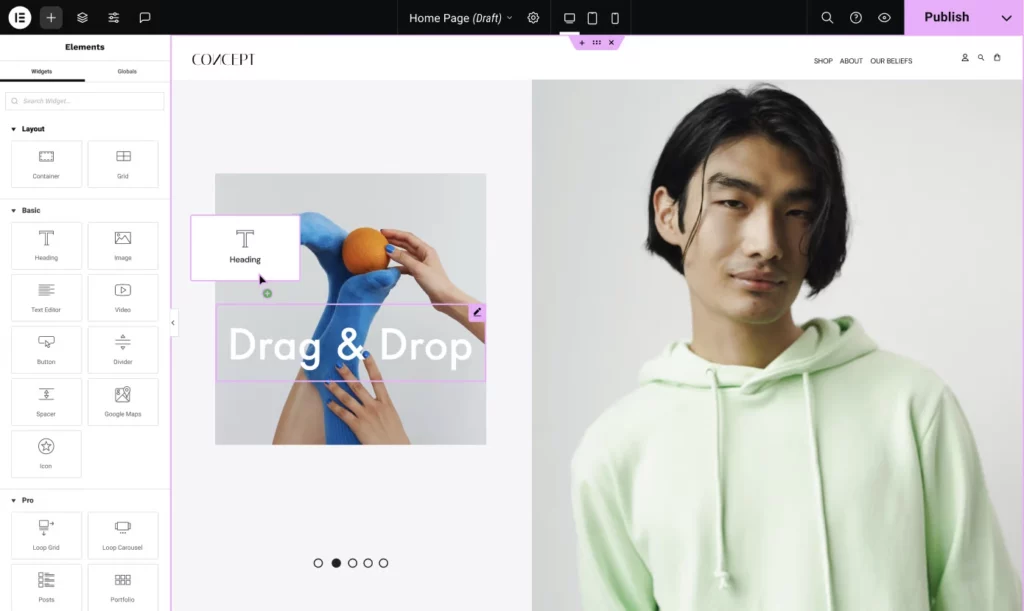
3.1 Get Your Figma Design Ready and Set Up WordPress
Ensure the completion and finalization of your Figma design, incorporating all necessary layouts, elements, and assets. Install WordPress on your web server or choose a local development environment such as XAMPP or WAMP
3.2 Install the Plugin, generate a New Page, and Open the Elementor Editor
Install and activate the Elementor page builder plugin from the WordPress repository. In the WordPress admin panel, navigate to “Pages” and create a new page or template for your Figma design. On the page edit screen, click the “Edit with Elementor” button to open the Elementor editor.
3.3 Bring Your Figma Design into Elementor
Once in the Elementor editor, you can import your Figma design using various methods. Choose a Figma to HTML conversion service or tool to generate HTML/CSS code, and then copy and paste the code into an Elementor section or widget.
Alternatively, use a Figma to WordPress plugin that allows the direct import of Figma designs into Elementor. Explore plugins like Figma to WordPress or Figma Importer in the WordPress plugin repository. Another viable option is to hire an expert to handle the conversion of your Figma design to WordPress.
3.4 Personalize and Enhance the Design
After importing the Figma design into Elementor, begin personalizing and refining it by using the various styling and layout options provided by Elementor. Customize the design as needed, adjusting colours, fonts, spacing, and other visual elements to align with your original Figma design
3.5 Incorporate Dynamic Content and Features
Use Elementor’s widgets and integrations to incorporate dynamic content and functionality into your design. Integrate elements such as contact forms, sliders, galleries, or any other interactive features essential to your design.
3.6 Preview and Test Your Work
Use Elementor’s preview feature to observe how your design appears and behaves across various device viewports, including desktop, tablet, and mobile. Thoroughly test interactivity, responsiveness, and overall functionality to ensure it aligns with your specifications.
Looking to transition from Figma to WordPress, but curious about other design-to-WordPress options?
Check out our blog on “Advantages of PSD to WordPress Conversion for Business Website” for insights into another popular conversion path!
3.7 Save and Go Live
Once you are satisfied with the design, save your modifications in Elementor and publish the page or template to make it live on your WordPress site.
Pros:
- Visual Interface: Drag-and-drop interface enables design creation and editing without requiring coding knowledge, making it accessible to users of all technical levels.
- Faster Development: Page builders often accelerate the development process, allowing for quicker website creation and updates.
- Live Preview: Elementor offers real-time previews of changes, enabling you to visualize the design as you build it.
- Extensive Widgets and Templates: A wide range of pre-built widgets and templates streamline the addition of common design elements and page structures.
- Dynamic Content Integration: Integrate dynamic content features such as forms, sliders, and galleries with ease.
- Responsive Design: Elementor facilitates the creation of responsive designs that adapt seamlessly to different screen sizes.
Cons:
- Plugin Dependency: Reliance on a third-party plugin adds an extra layer of complexity and potential compatibility issues.
- Potential Performance Impact: Page builders can sometimes introduce additional code that might affect website performance, especially if not optimized carefully.
- Design Constraints: Elementor’s framework may impose certain design limitations compared to custom coding or a perfectly matching theme.
- Limited Customization: While offering customization options, complete control over every aspect of the design might not always be possible.
Here are some additional things to keep in mind
- There are several plugins available that can help you convert Figma designs to WordPress themes. These plugins can save you time and effort, but still, they’re not perfect.
- It’s important to test your website thoroughly before you launch it. This will help you ensure that your Figma designs have been translated correctly to WordPress
- If you’re not comfortable with coding or using WordPress, consider getting help from a developer to bring your Figma designs to WordPress.
Leave a Reply
Articles
Related Insights.
Blogs and Resources on WordPress, WooCommerce, SEO and Marketing
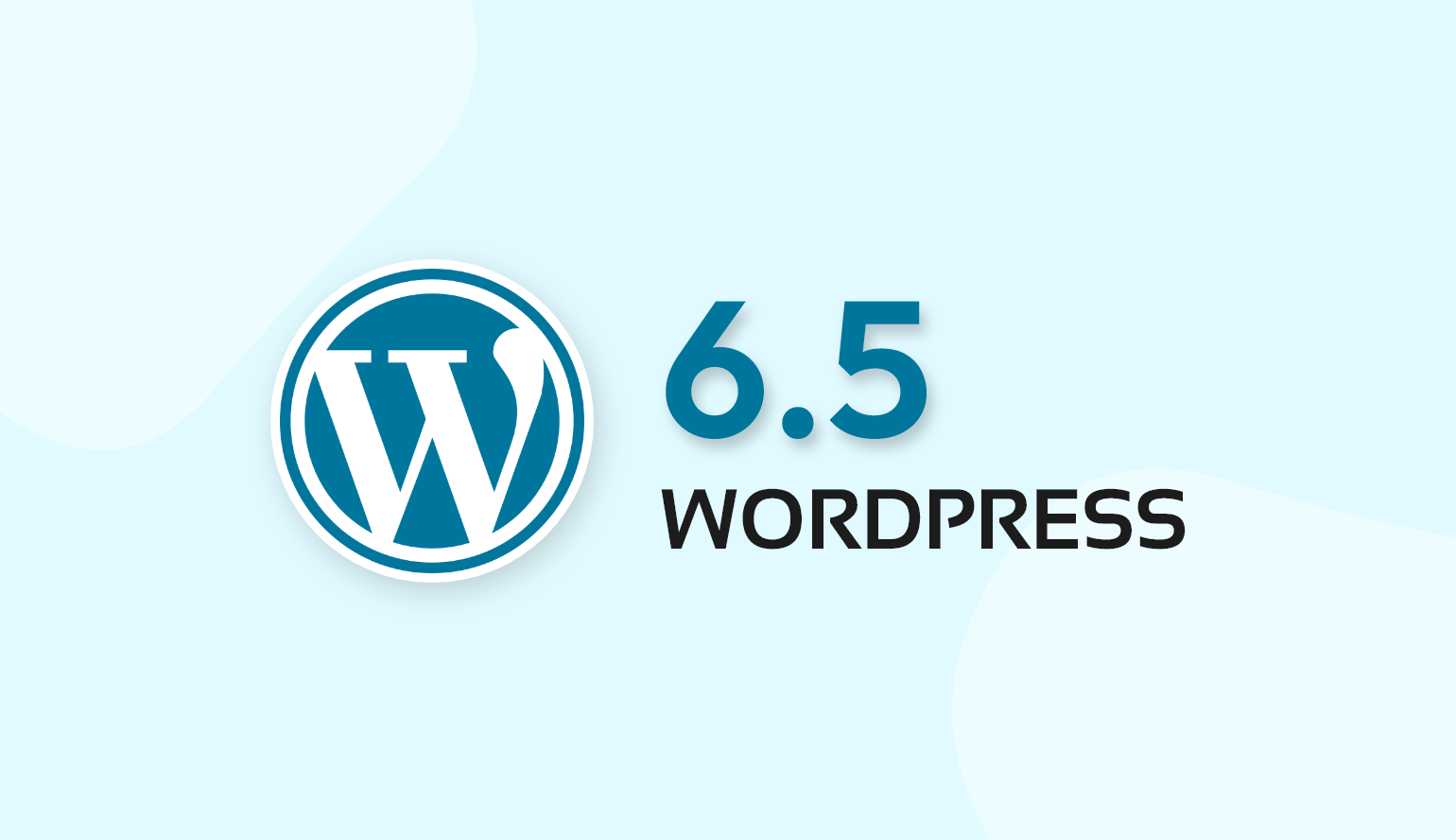
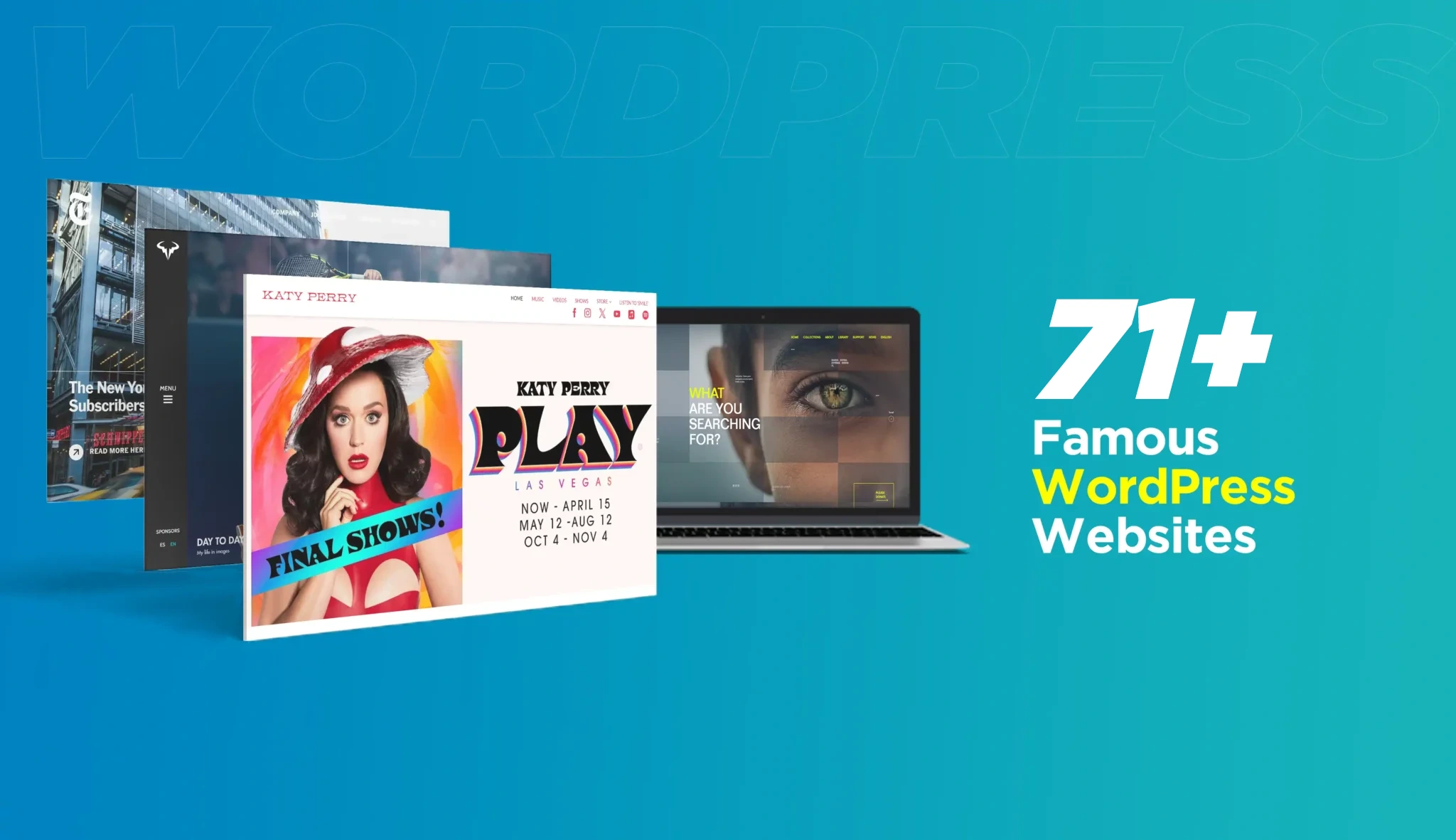
Leave a
Comment.